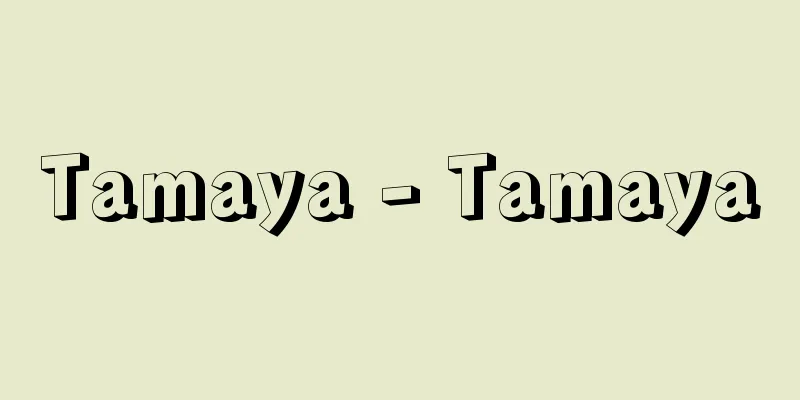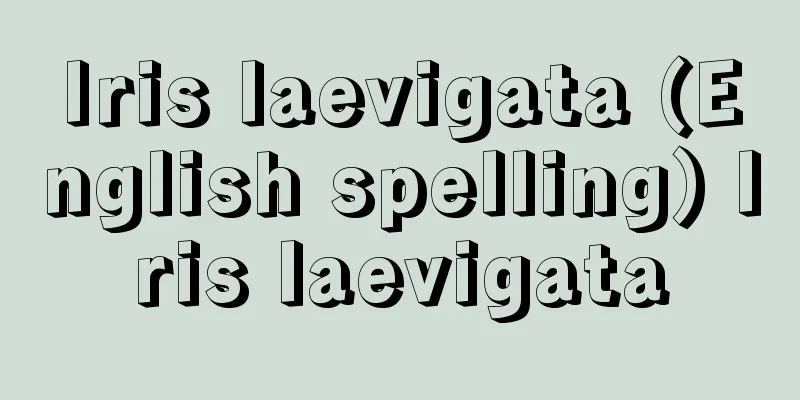Tamaya - Tamaya

|
[1] 〘 noun 〙① A house that makes and sells balls. Also, the person who makes and sells them. Tamatsukuri (balls making). Tamasuri (balls selling). ※Seventy-first Artisan Poetry Contest (around 1500) No. 39 "The dew on the eaves of Tamaya, the moon's shadow, I see, even if I don't polish it, it's not worth it."② A person who sells soap bubbles. 《Season・Spring》※Kiyomoto・Odoke Nigatani Tamatori (Tamaya) (1832) "Come on, come on, come on, look, blow, the famous balls, balls."[2][一] During the Edo period, one of the fireworks manufacturers. Around the Bunka era ( 1804-18 ), Kagiya's head clerk, Seishichi, branched off and founded the company. Their fireworks, along with those of the same trade, Kagiya, were popular at the river festivals in Edo and Ryogoku, but were discontinued in 1843 due to a fire accident. By extension, it is also used as a word of praise when fireworks are set off. *Dangihon Kodan Ukiyobukuro (1770), vol. 3 "Tamaya , even thunder covers its ears to the voices of Tamaya" [2] A brothel located in Edo's Shin-Yoshiwara Edo-cho 1-chome (Sensoku 4-chome, Taito-ku, Tokyo). It is also called "Kado no Tamaya." *Sakehon Tsugen Sori (1787), vol. 1 "Takeya no Mizugai, Tamaya no Emasimugi" [3] Kabuki Shosakuto. Kiyomoto. Lyrics by Segawa Jyoko II. Music by Kiyomoto Saibei I. Choreography by Fujima Kanjuro III. First performed at the Edo Morita-za in 1832 ( Tenpo 3 ). One of Nakamura Utaemon IV's four-form dance "Odoke Niwaka Shabon no Tamatori ." It is a dance version of the summer soap bubble sellers that were popular at the time. Source: The Selected Edition of the Japanese Language Dictionary About the Selected Edition of the Japanese Language Dictionary Information |
|
[1] 〘名〙① 玉をつくったり売ったりする家。また、その人。たまつくり。たますり。※七十一番職人歌合(1500頃か)三九番「軒の露玉屋の月の影みればみがかずとてもことたりぬべし」② シャボン玉を売る人。《季・春》※清元・おどけ俄煮珠取(玉屋)(1832)「さあさあ寄ったり見たり吹いたり評判の玉や玉や」[2][一] 江戸時代、花火製造元の一つ。文化(一八〇四‐一八)頃、鍵屋の番頭清七が分家し創業。その花火は、同業の鍵屋とともに江戸、両国の川開きで人気があったが、天保一四年(一八四三)失火により廃絶。転じて、花火のあがるときのほめことばとしても用いる。※談義本・興談浮世袋(1770)三「玉屋(タマヤ)玉屋の人声には、雷も耳をふさぐ」[二] 江戸の新吉原江戸町一丁目(東京都台東区千束四丁目)にあった遊女屋。「角の玉屋」ともいう。※洒落本・通言総籬(1787)一「竹屋の水貝しづか玉屋のゑましむぎ」[三] 歌舞伎所作事。清元。二世瀬川如皐作詞。初世清元斎兵衛作曲。三世藤間勘十郎振付。天保三年(一八三二)江戸森田座初演。四世中村歌右衛門の四変化舞踊「おどけ俄煮玉取(おどけにわかしゃぼんのたまとり)」の一つ。当時流行していた夏のシャボン玉売りを舞踊化したもの。
出典 精選版 日本国語大辞典精選版 日本国語大辞典について 情報 |
>>: Tamamo no Mae's Morning Sleeves - Tamamo no Mae's Morning Sleeves
Recommend
Velvet bentgrass (English spelling) Velvet bentgrass
...Varieties include Astoria and Highland, and la...
hairy vetch
…In cold regions, it is cultivated by sowing in t...
Rhododendron serpyllifolium (English name) Rhododendronserpyllifolium
…[Yoshiharu Iijima]. … *Some of the terminology t...
self identity
...a concept that explains how the personality, i...
Anchos, G. - Anchos
…French physician and occult researcher. His real...
Chatterley's Trial - Chatterley's Trial
This was a trial over whether Ito Sei's Japane...
Apadana (English spelling)
The remains of a palace in Persepolis, an ancient ...
Eurhythmics - rythmique (English) French
A music education system created by Swiss compose...
Montevideo (English spelling)
The capital of Uruguay. It is the capital of Monte...
Kayayama Shell Mound
A shell mound from the end of the early Jomon per...
intergovernmental relations
...An organization created by private individuals...
Banana Skipper (English name) Erionota torus
An insect of the Hesperiidae family. It is so name...
powellite
…In Japan, it has been found in Nakatatsu mine in...
Ventilation mechanics test - Ventilation mechanics test
...However, the lungs have a large functional res...
Beyond the Gratitude and the Enmity
A short story by Kikuchi Kan. Published in Chuokor...









